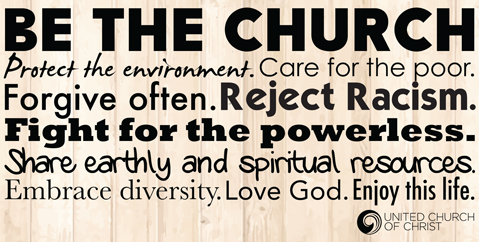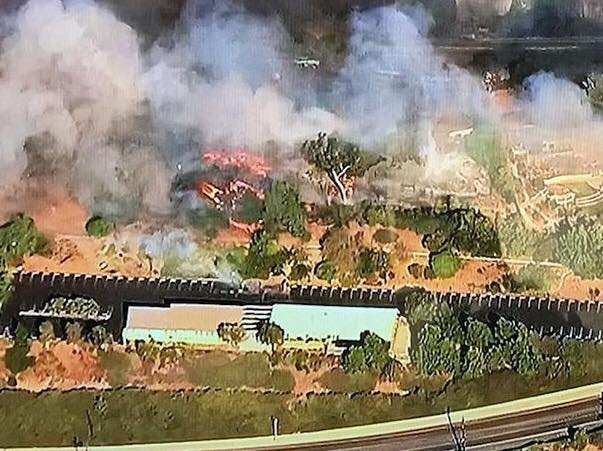OGHS January 28
Mark 1: 21-28
Authenticity that Puts Faith into Action for the Sake of Embodied Wholeness
 Jesus and his disciples begin their journey together with a tour through Capernaum. They stop in at the synagogue on the Sabbath, signaling the importance of the already established community of faith and where they gather. Jesus teaches here. The people are astounded at his teaching, rating him above the scribes on the scale of authority. Is it the confidence in his presentation or is there some other qualitative characteristic that triggers this reaction? The story continues.
Jesus and his disciples begin their journey together with a tour through Capernaum. They stop in at the synagogue on the Sabbath, signaling the importance of the already established community of faith and where they gather. Jesus teaches here. The people are astounded at his teaching, rating him above the scribes on the scale of authority. Is it the confidence in his presentation or is there some other qualitative characteristic that triggers this reaction? The story continues.
As if on cue to this question of authority, a man with an unclean spirit bursts onto the scene. Mark’s gospel presents Jesus’ identity as a “messianic secret” whose cover continually gets blown by the most surprising of story characters. Here, it is the unclean spirit, the power of disruption and destruction, who identifies Jesus’ authority – publicly outing him as “the Holy One of God.”
This is not a welcome identification by that unclean spirit. The power’s tone is accusatory. It says to Jesus, “What have you to do with us, Jesus of Nazareth? Have you come to destroy us?” Jesus’ answer – yes. In the written text, Jesus’ response is “Be silent and come out of him!” And it does. The qualitative difference of Jesus’ teaching is that it is not just teaching ABOUT God’s good news, but that the good news of healing and wholeness is embodied in their midst.
Liberation theology points out that Jesus’ ministry, and ours, is to comfort the afflicted and afflict the comfortable. The embodiment of Jesus’ ministry and his very identity is to destroy the root causes of pain and destruction, to make the world whole for all. “The time is fulfilled; and the kingdom of God has come near.” (Mark 1:14) This is not welcome news for an unclean spirit of oppressive power.
In this narrative, Jesus demonstrates the convergence between what he says and what he does to embody who he is. The outcome is healing and wholeness. “The unclean spirit, convulsing him and crying with a loud voice, came out of him.” The process is not pretty or straightforward. The process is not painless or easy. Convulsing accompanied by loud crying is a strong event – for the man afflicted, for the synagogue-goers and scribes, for the disciples and even for Jesus himself.
The outcome: The afflicted man is rid of the unclean spirit, so no doubt his life is changed for the better. But, more importantly for this narrative, the witnesses to the event are impacted and empowered. The story repeats their reaction from a few verses previously. “They were amazed.” But this time, they express their glimpse of the meaning of this action. This is “a new teaching – with authority.” This healing and wholeness embodied in their midst – beyond what they could ever imagine – is who God is. And now they are now part of that unfolding action and embodiment.
INTERACTION WITH STORY
Interacting with this text through the lens of accompanying people who experience forcible displacement, poverty or natural disaster highlights several parts of that ministry. We all are involved in these Humanitarian and Development ministries as they are made possible through the UCC’s One Great Hour of Sharing Offering.
- The unclean spirit often is the first spotter of the Holy One in our midst. The chaos caused by disaster or violence, is often the disruption that put us in direct contact again with the presence of God in our midst. The reminder that people live without clean water or enough food or adequate health care can jolt us into more awareness that this situation is not who God is nor what God intends for the world.
- The powers and root causes of these destructive events and chronic exclusion do not welcome the awareness that this is not normal nor the goal of creation. Those events of disaster, displacement and poverty scream at the embodiment of wholeness in an accusatory tone – trying to deflect the intent and outcome of efforts toward a just world for all. “What have you to do with us? Have you come to destroy us?” Well, yes.
Such efforts toward wholeness and care for all live always in the shadow of accusations and the danger of falling into the trap that these actions are done for the sake of our own power and not for the outcome of well-being for all. Political parties rooted in extreme Hinduism in India, for example, accuse Christians of using education or health care to entice or forcibly convert people to Christianity. Public perception in the time of natural disaster or refugee displacement can easily wander into an assumption that communities of faith will care first for “their own.”
Christian Scripture and action, however, move us in the opposite direction. Jesus’ embodiment of new life draws us into relationship with all people, particularly those most excluded and vulnerable. The role of UCC Humanitarian and Development ministries is to walk with those most impacted or most excluded from access to resources. Some stories from early response to 2017 high attention disasters in the United States illustrate this commitment to exercise who we are as church through care for all.
 Some stories of this theology in action:
Some stories of this theology in action:
Texas – Post Hurricane Harvey – Disaster Aid Distribution
Florida – Post Hurricane Irma – Hot meals, Ice and Electricity
US Virgin Islands & Puerto Rico – Clean Water
Northern California Wildfires – Connecting the Most Vulnerable with Fire-Recovery Resources
Southern California Wildfires “Be the Church”
- The convulsions and loud cries of the unclean spirit as it is uprooted are not easy to witness, but continued presence and engagement is absolutely necessary. For example, HIVAIDS has been an epidemic that once was thought unstoppable. Controversy has saturated responses to this epidemic, including the attitudes and action (or lack of action) by communities of faith.
But faith communities also have been at the heart of positive steps toward the elimination of this disease as an epidemic. The United Church of Christ has joined and led communities of faith around the world in actions from grassroots prevention efforts to shaping global policies and campaigns for HIVAIDS elimination. To help implement the United Nations’ AIDS strategy of 2016-2021,“Fast-Track: Ending the AIDS epidemic by 2030,” the UCC and faith-based partners focus on ending stigma and discrimination. The UNAIDS strategy names the current moment as a tipping point. To not fast-track the AIDS response in order to reach targets for treatment, knowing HIV status and achieving zero discrimination would set back the current grasp on the epidemic as new infections and deaths would outpace the response . Eliminating the root causes of this epidemic – its stigma – can cause convulsions and loud screaming, but continued engagement offers a glimpse of the embodied wholeness that Jesus makes possible through his words and actions.
So – stay engaged. We, like the people in the people in the synagogue at Capernaum, are witness to and part of a movement for wholeness and a just world for all. Mark reports that “They were all amazed, and they kept on asking one another, “What is this? A new teaching – with authority! He commands even the unclean spirits, and they obey him.” We, too, are part of this journey to be part of Jesus’ work and identity in the world of healing and wholeness. In that journey, is where we too catch this glimpse and experience this awe of the new teaching – with authority. It is the authority of embodied wholeness, the authority of the Holy One.